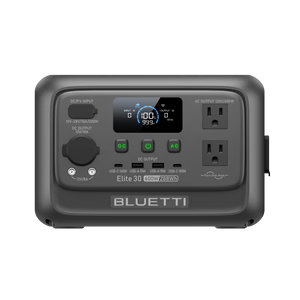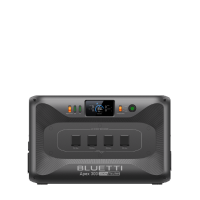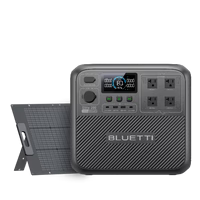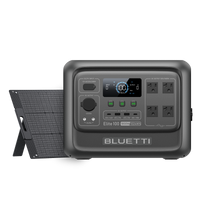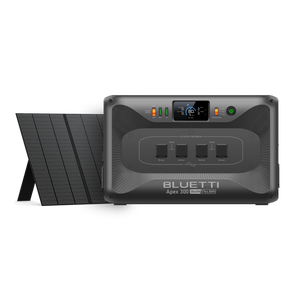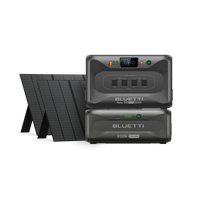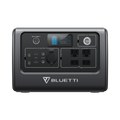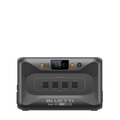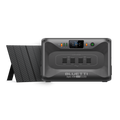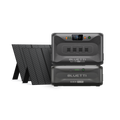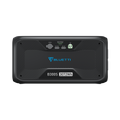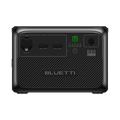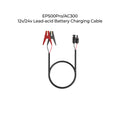J'ai constaté une augmentation rapide de la popularité des centrales électriques portables comme la BLUETTI EB70S. Il semble que partout où vous regardez sur Facebook ou Instagram, une nouvelle entreprise en propose un. La demande de solutions d'alimentation portables a augmenté ces dernières années, car les gens veulent camper, voyager par voie terrestre ou simplement disposer d'une alimentation de secours fiable en cas d'urgence, mais ne veulent pas des tracas liés à un générateur à essence. De nombreuses personnes souhaitent abandonner complètement les combustibles fossiles. Les campeurs et les voyageurs modernes veulent s’éloigner de tout, mais ils veulent souvent emporter avec eux leurs téléphones, ordinateurs ou tablettes… autant d’appareils qui doivent être rechargés.
La solution ?
Ils ont besoin d’une solution d’alimentation portable construite autour d’une batterie et pouvant être rechargée par divers moyens, notamment par l’énergie solaire lorsqu’elle est hors réseau. Bien que la plupart de ces centrales électriques portables présentent des caractéristiques à peu près similaires, elles n’ont pas toutes le même prix. BLUETTI comble ce vide en devenant l'un des principaux fabricants de batteries de secours et d'énergie solaire, mais offrant un très bon rapport qualité-prix. Le BLUETTI EB70S est l’une des valeurs les plus solides du marché à moins de 700 $ CA.
Le cœur de l'EB70S est une batterie d'une capacité de 716 Wh conçue pour plus de 2 500 cycles de recharge. J'ai examiné uniquement des centrales électriques évaluées jusqu'à plus de 500 cycles de recharge, donc la BLUETTI EB70S se distingue comme une unité que vous pouvez utiliser pendant des années sans dégradation sérieuse des performances.
L'EB70S a une puissance de sortie nominale de 800 W (puissance sinusoïdale pure), bien qu'il fournisse jusqu'à 1 400 W de puissance de surtension pour les appareils qui consomment plus de courant au démarrage. J'ai découvert que cela permettait vraiment d'élargir les types d'appareils qui pouvaient être alimentés par celui-ci, y compris, par exemple, mon mixeur haute puissance. J'ai également pu faire fonctionner ma bouilloire de voyage même si elle consomme constamment environ 800 W.

Une chose qui m'a marqué à propos de l'EB70S par rapport à d'autres unités que j'ai testées est la gestion intelligente de l'alimentation. En termes simples, l’EB70S semble très « branché » (pardonnez le jeu de mots) sur ce qui lui est connecté et sur la sécurité de son fonctionnement. Il le communique via le panneau LCD lumineux situé à l'avant de l'appareil. Par exemple, la première fois que j'ai essayé de faire fonctionner mon mixeur, j'ai reçu un message d'erreur indiquant un court-circuit et il n'a pas tenté d'alimenter le mixeur. J'étais curieux de savoir pourquoi, alors j'ai débranché le mixeur et j'ai constaté que la prise était humide. Après avoir séché la prise, l'EB70S a pu alimenter le mixeur sans problème. J'ai fini par être impressionné par la gestion intelligente de l'alimentation plutôt que d'être ennuyé, car les capteurs de l'appareil avaient évité une situation potentiellement dangereuse. L'EB70S a fait fonctionner ma bouilloire à thé portable de 800 W sans se plaindre, mais lorsque j'ai essayé de brancher ma grande bouilloire (évaluée à 1 500 W de tirage), l'EB70S n'a pas essayé de l'alimenter mais m'a plutôt donné un message de « surcharge » sur l'écran LCD. J'ai effectué des tests sur d'autres unités qui ont tenté d'alimenter la bouilloire et ont dû s'arrêter à mi-cycle. Il y a moins de risques d'endommager l'appareil ou les batteries lorsqu'il y a des capteurs intelligents comme celui-ci.
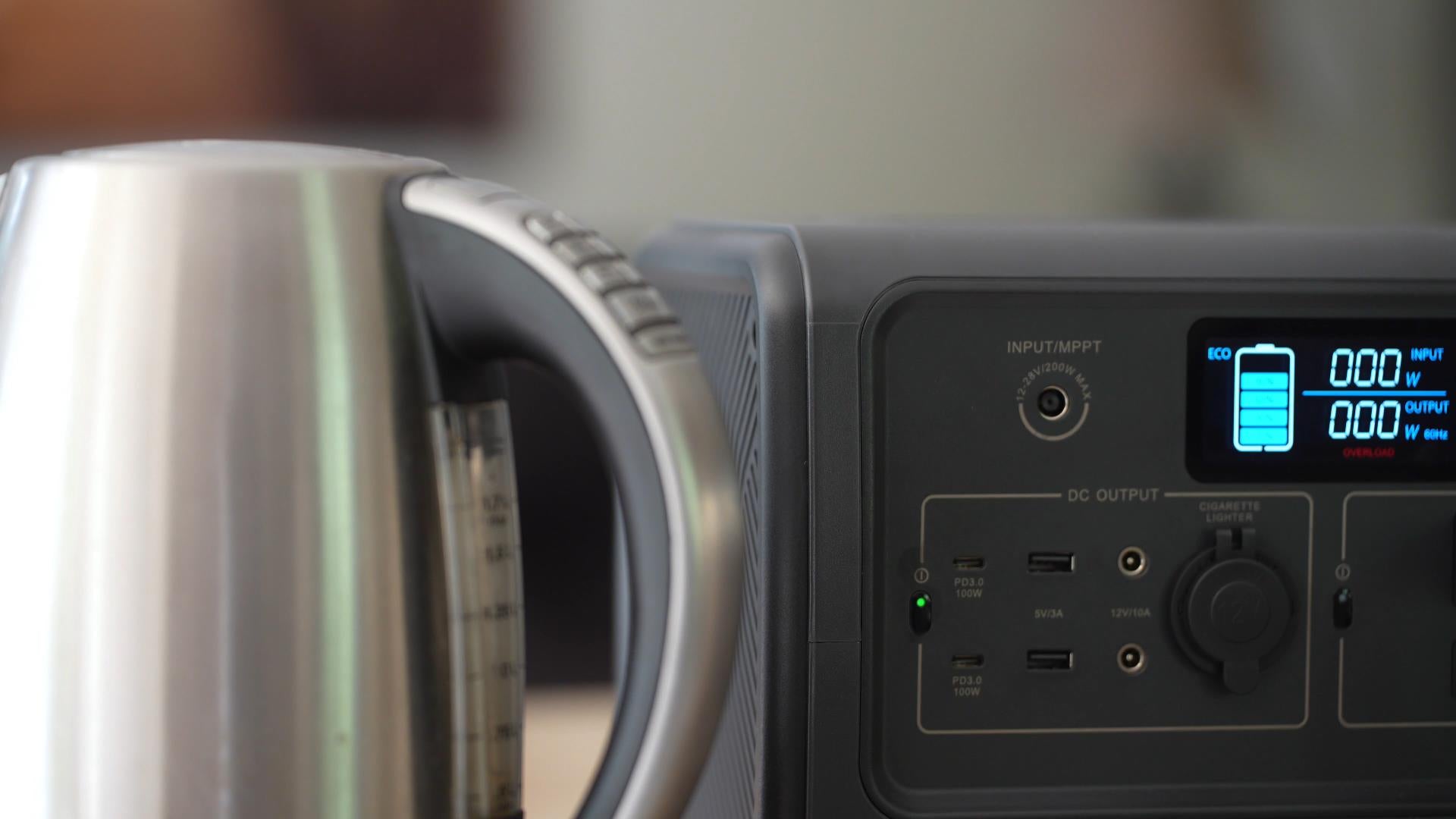
Je fais souvent des spots vidéo sur place en tant que photographe et testeur d'équipement, j'utilise donc fréquemment l'EB70S pour faire fonctionner l'éclairage hors réseau. Je peux obtenir des heures d'éclairage même avec des projecteurs à forte consommation grâce à la grande capacité de la batterie de l'EB70S.
J'ai effectué de nombreux travaux de construction au cours des dernières années et je suis passé presque exclusivement à des outils alimentés par batterie. J'utilise régulièrement l'EB70S pour charger les batteries de mes outils électriques, car je travaille souvent sur un chantier où l'électricité n'est pas disponible ou où il n'y a que quelques prises de courant qui sont rapidement occupées. Même à la maison, j'ai mes chargeurs pour mes batteries attachés à l'EB70S car j'aime l'idée de les charger « gratuitement » puisque je recharge presque exclusivement la station d'alimentation à partir du Panneau solaire BLUETTI PV200 200W. Mon adaptateur secteur pour l'EB70S ramasse la poussière car j'essaie uniquement de charger l'appareil via l'énergie solaire.
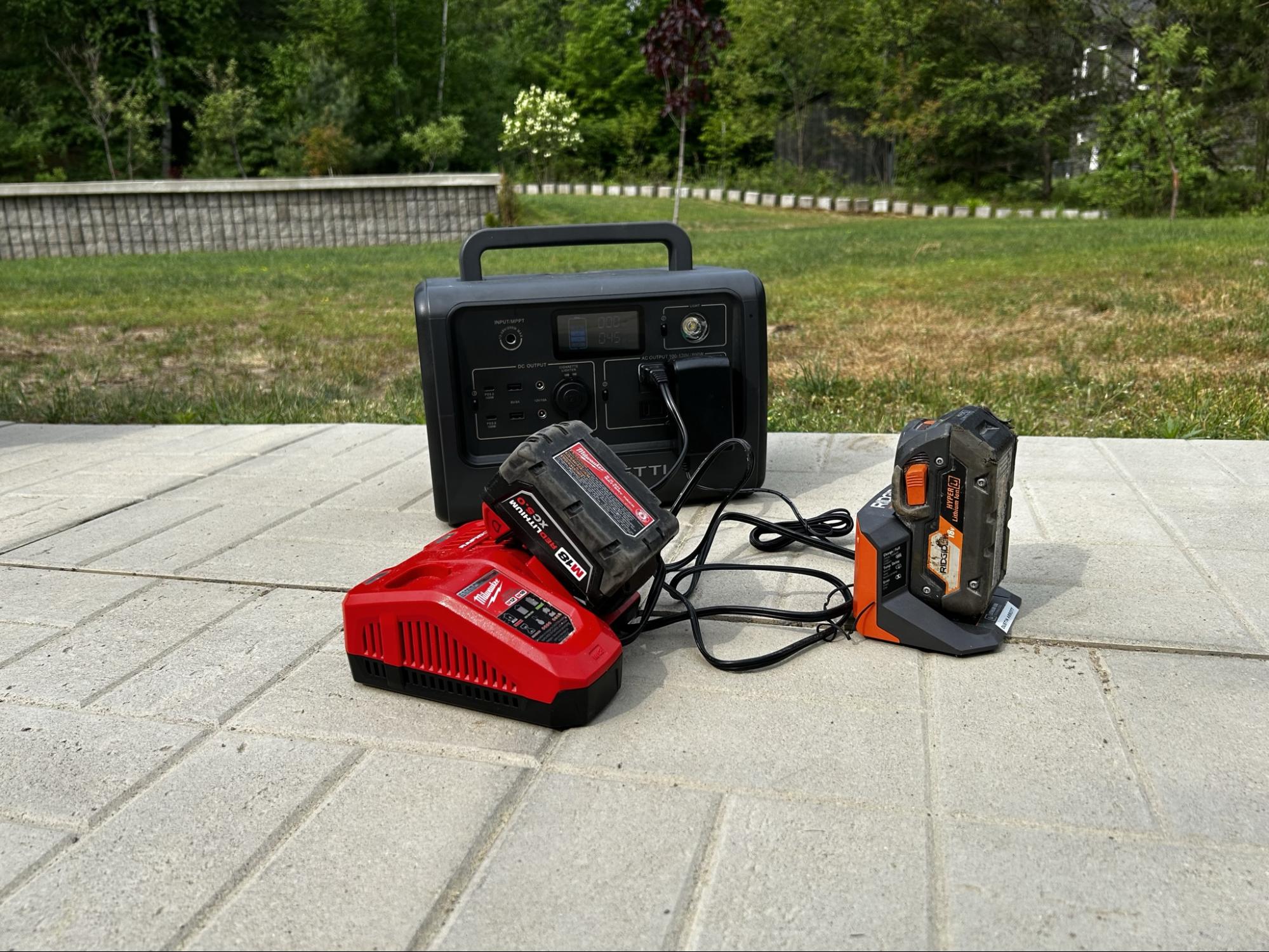
L’une des principales applications d’une centrale électrique comme celle-ci est destinée à ceux qui aiment camper ou faire du tout-terrain, mais qui ont besoin de continuer à alimenter certains appareils comme un CPAP pour les aider à dormir. Il y a suffisamment d'énergie ici pour faire fonctionner un CPAP pendant plusieurs nuits et, bien sûr, si vous avez un panneau solaire, vous pouvez vous assurer d'avoir toujours de l'énergie en réserve.
L'EB70S dispose d'une grande variété de ports pour alimenter les appareils. Il y a quatre prises secteur 120 V/20 A, dont deux sont équipées d'une troisième prise de terre pour les appareils plus robustes. Il dispose également de 2 ports USB-C (débit jusqu'à 100 W de puissance délivrée, ce qui est supérieur à certains concurrents qui limitent leur PD à 60 W), 2 autres ports USB-C sont évalués pour (sortie 5 V/3 A). Il existe également quelques options CC, notamment une voiture CC 12 V/10 A et deux ports DC5521 12 V/10 A. Un socle de chargement sans fil de 15 W situé sur le dessus de l'appareil permet le chargement par induction de votre téléphone ou de votre tablette.
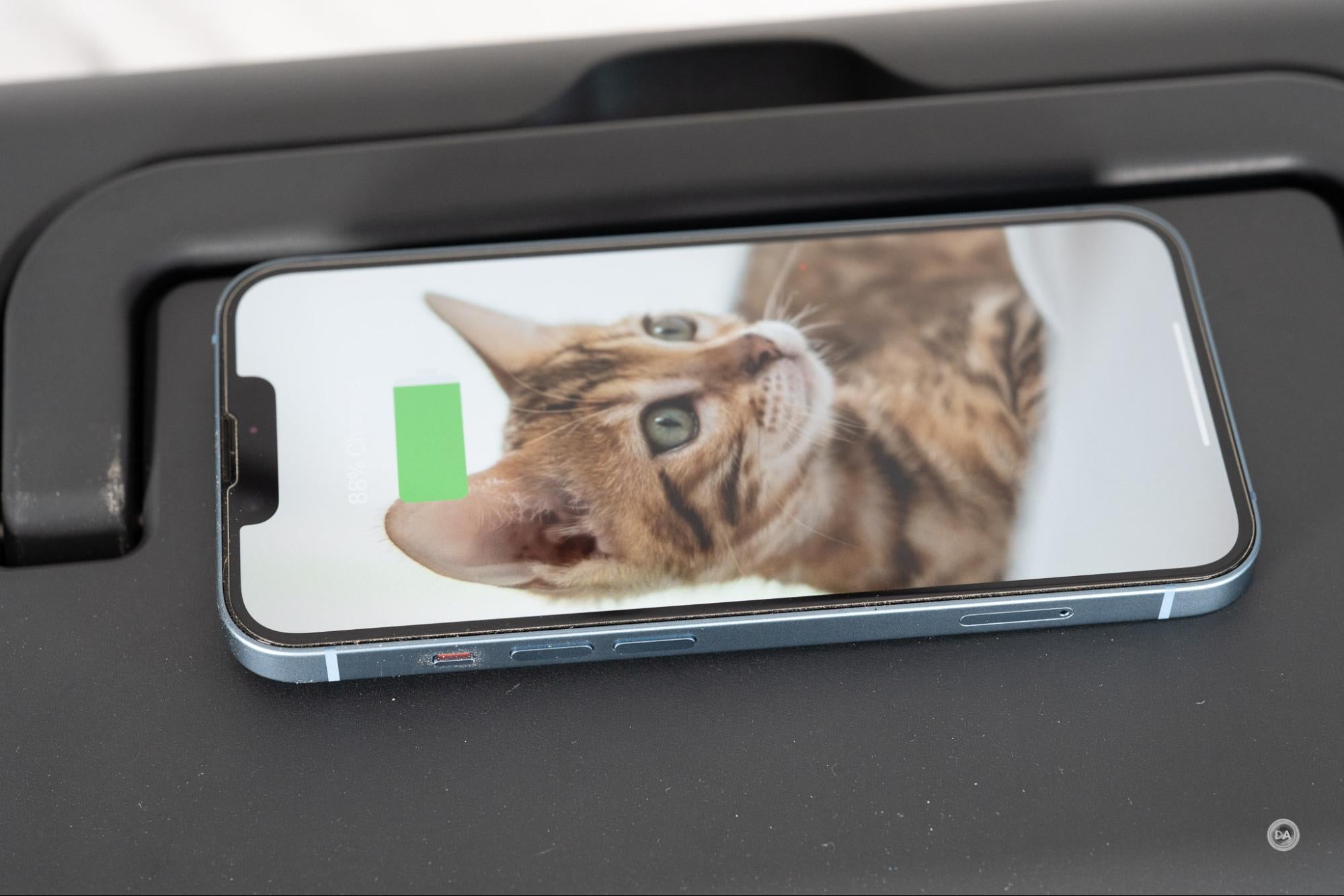
L’une de mes frustrations concernant le chargement de la batterie dans l’appareil photo est qu’il existe des variations dans la norme d’alimentation de l’USB-C. Mes appareils photo Canon nécessitent un certain type de chargeur/adaptateur ou de cordon, mes appareils photo Sony et Fuji en nécessitent un autre. Il est frustrant d’ajouter du désordre en raison de multiples chargeurs et adaptateurs pour s’adapter aux différentes normes. Il y a quelque chose dans la façon dont l'alimentation est délivrée qui est plus universelle, et je peux utiliser le même port avec le même câble et charger tous mes appareils photo.
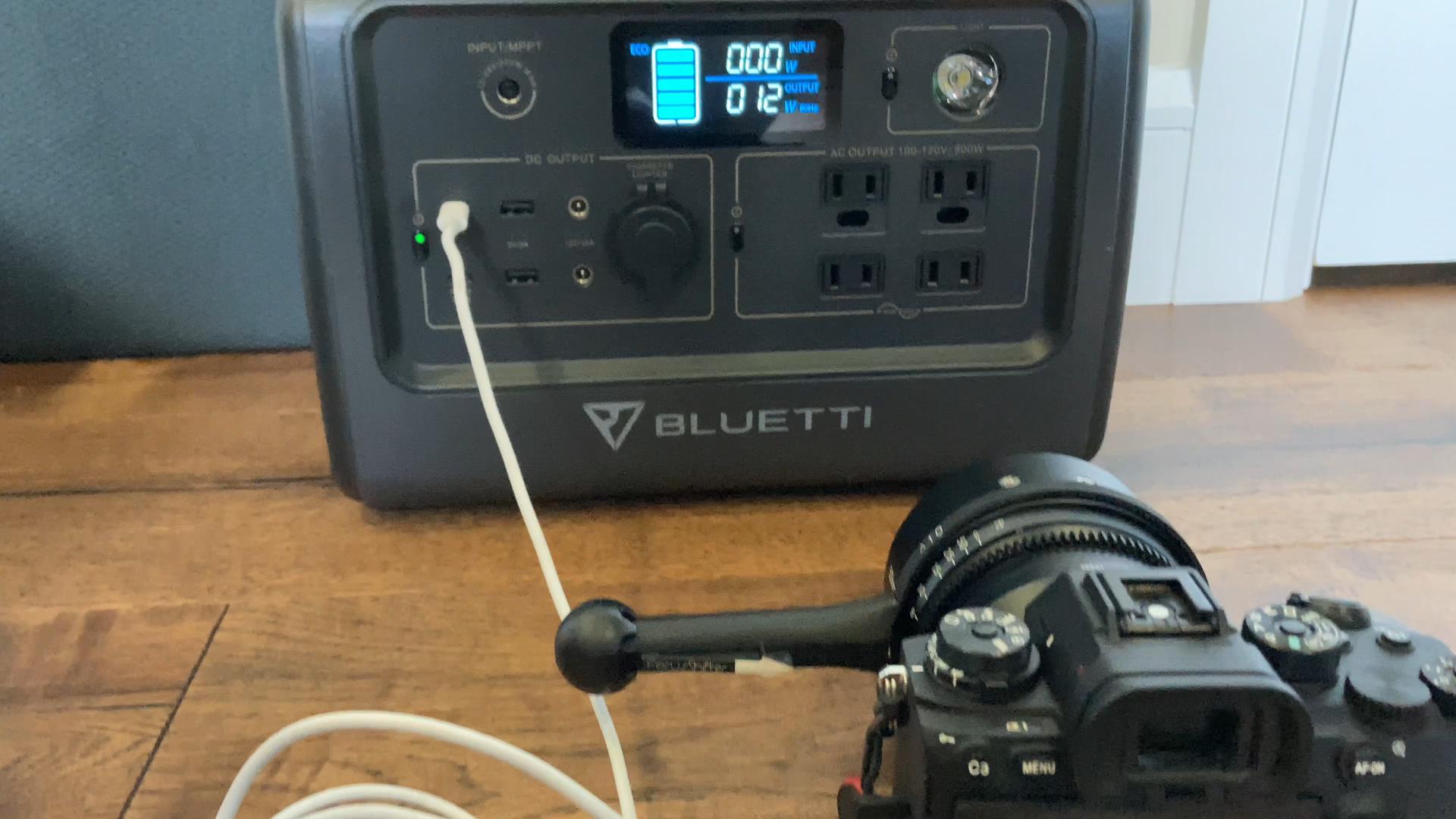
Il convient de noter que la charge de petits appareils comme des appareils photo ou des téléphones ne prendra qu'un ou deux points de pourcentage de la charge totale de la batterie de l'EB70S. Bluetti estime que vous pouvez recharger votre téléphone plus de 50 fois avant de devoir recharger l'EB70S lui-même.
L’une de mes utilisations les plus uniques de l’EB70S a eu lieu lorsque mon tracteur à gazon refusait de démarrer et que j’étais loin de toute prise électrique. J'ai apporté l'EB70S avec un chargeur de batterie, et je l'ai utilisé pour recharger un peu ma batterie afin de pouvoir retourner au travail.
Il existe une variété d'options pour charger l'EB70S. Cela inclut ma méthode préférée : un panneau solaire comme le PV200 (la charge prend 5 à 5,5 heures selon les conditions d'ensoleillement). Vous pouvez également le recharger à partir du réseau via l'adaptateur secteur inclus (4 à 4,5 heures), ou même à partir d'une voiture à l'aide de l'adaptateur CC 12 V inclus (style prise allume-cigare) en 7 à 7,5 heures, ce qui peut être utile lors de déplacements terrestres et de déplacements d'un endroit à un autre. L'EB70S peut se charger à une vitesse allant jusqu'à 200 W et, bien qu'il existe des unités qui peuvent se charger plus rapidement, il s'agit en fait d'un meilleur taux de charge qu'un certain nombre d'unités plus chères que j'ai testées.
L'EB70S pèse 21,4 livres (9,7 kg) et mesure 12,6 x 8,5 x 8,7 pouces (32 x 21,6 x 22,1 cm). Il est raisonnablement compact et une poignée rétractable sur le dessus le rend facile à déplacer… même si je ne voudrais pas avoir à le transporter trop loin ! Le design lui-même est épuré et moderne, avec des orifices de ventilation de chaque côté pour aider à garder les choses au frais.
Il y a une lumière LED à plusieurs niveaux sur le devant de l'appareil. J'ai trouvé cela particulièrement utile pendant pannes de courant pour fournir de la lumière tout en connectant d'autres choses à l'EB70S. Cela serait également très utile en camping.

L'écran LCD de l'EB70S c'est génial – clair et lumineux, et avec beaucoup d'informations à l'écran, même si j'ai une plainte. L'écran affiche une quantité exacte de puissance de sortie ou d'entrée, mais le reste La durée de vie de la batterie de l'appareil est affichée en seulement cinq étapes (0-20 %, 20-40 %, etc.). Tous les autres appareils que j'ai testés affichent la puissance restante en pourcentage total (78 %, par exemple), ce qui indique l'état de charge restant avec plus de précision et peut également vous donner une image plus claire du temps de charge supplémentaire nécessaire.
Comme indiqué au début, l’un des points forts de l’EB70S est son prix. Le prix de l'EB70S est agressif 700 dollars canadiens. Vous pouvez l'associer au panneau solaire PV200 pour un total de 1 250 $ CA, ce qui est moins cher que ce que certaines marques concurrentes facturent pour une centrale électrique équivalente seule. Pour ce prix, vous obtenez la centrale électrique ainsi que tous les câbles et adaptateurs nécessaires pour la charger à partir de diverses sources.
J'utilise le BLUETTI EB70S régulièrement depuis environ neuf mois et il continue d'être utile dans diverses situations. Il a gardé nos téléphones et tablettes (ainsi que quelques lumières et nos communications) - Internet et téléphone) fonctionnent en cas d'urgence électrique, et nous avons eu la chance que l'électricité soit (jusqu'à présent) toujours revenue avant que la capacité de la batterie de l'EB70S ne soit épuisée. J'ai chargé des téléphones, des tablettes, des appareils photo, des batteries d'outils électriques et bien plus encore. Et, le meilleur pour moi, c'est que je l'ai chargé presque exclusivement à l'énergie solaire, ce qui signifie qu'après l'investissement initial, l'électricité provient d'une source renouvelable (et gratuite !). C'est encore plus significatif si c'est la SEULE source d'énergie dont vous disposez. Les centrales électriques portables comme celle-ci semblent être un code de triche pour le camping ou les voyages en tout-terrain et rendent la « vie à la dure », eh bien, beaucoup moins difficile !
